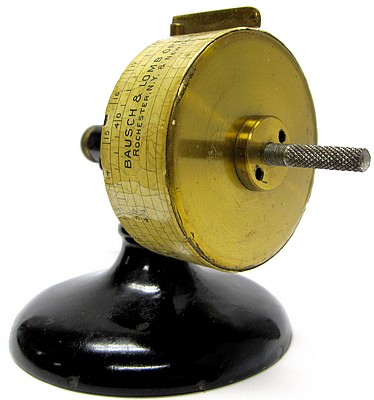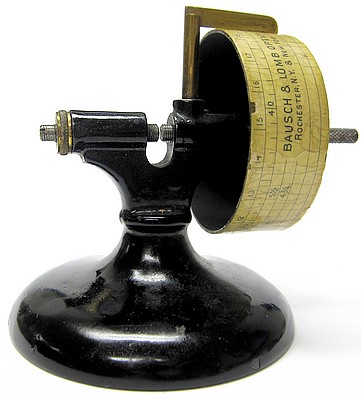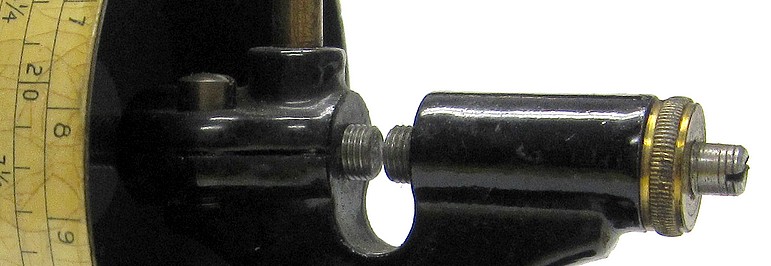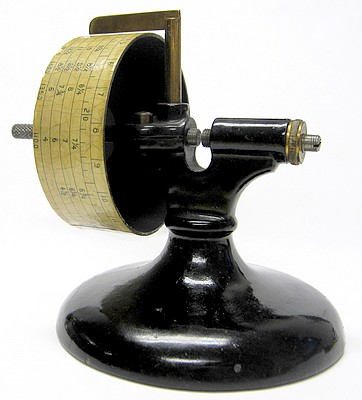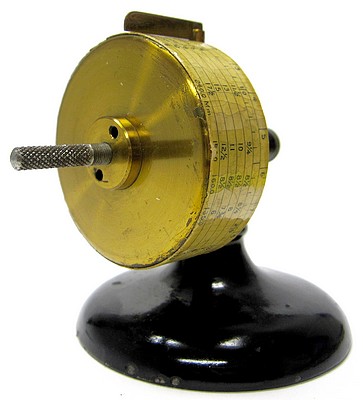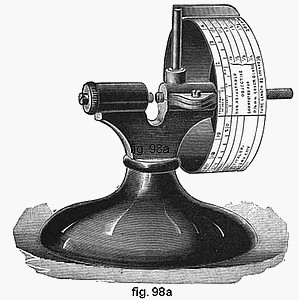Using a cover-glass on a microscopical preparation can introduce some optical aberrations if the objective is not corrected for the thickness of the cover-glass. These aberrations can be mitigated by applying a correction to the optical setup that takes into account the thickness. Accordingly, an instrument to measure the thickness of the cover-glass is needed. This page shows the micrometer type thickness gauge introduced by Bausch & Lomb in the late 19th century. This gauge is unique in that it not only measures the thickness of the cover-glass, but it also specifies the setting of the draw-tube to correct for a thickness that is different from that which a particular objective was designed. The following description and illustration of this instrument is taken from The Microscope by Henri Van Heurck, Eng. edition, 1893.
Messrs. Bausch & Lomb’s Cover-glass Gauge.—The principal object of this ingenious little instrument, represented by figure 98a, the price of which is only the small sum of three dollars (12s.), is to measure the thickness of cover-glasses. Its second object is to introduce a new system of cover-glass correction by means of a draw tube; in devising it, the object has been to provide a mechanical means for obtaining the best optical results without any possibility of doubt, and it accomplishes its purpose perfectly.
This instrument is provided with a stand of japanned iron; cut horizontally through the top is a thread 1/50 inch pitch and 3/16 inch outside diameter. A recess is cut in the top below the line of the screw and at right angles to it, for placing the covers. The one-half of the top of the stand which receives the micrometer screw is slotted longitudinally to the depth of the screw, and is provided with a set screw to take up wear, the other half has the fixed screw, adjustable however for final adjustment. The end of the micrometer screw is milled, but of a smaller diameter, so that no force can be exerted so as to endanger the cover-glass. Fixed on the screw between two nuts is a brass drum with a half-inch face. A knife-edge index finger is fixed to the top of the stand and projects over the top of the drum.
To the outside diameter of the drum is fixed a strip of glazed paper provided with a series of divisions. The first gives the thickness of cover-glass in one-thousandth inches, the second one-hundredth millimetre. The third indicates the proper tube length with various thickness of cover glass with a non-adjustable 1/4 corrected under a tube length of 8 1/2 inches and cover thickness of 0.16 mm.; the fourth gives the tube length of a 1/5 inch objective under the same conditions; the fifth for a 1/8, and the sixth for a 1/12 for the same conditions of tube length and cover; the seventh is for a 1/6 with the same cover and tube length of 160.0 mm.
In objectives provided with cover correction the graduation is so arranged as to read to 1/100 mm. No matter what the power of objective, or whether dry or water immersion, the number gives proper correction for a thickness corresponding to it.
